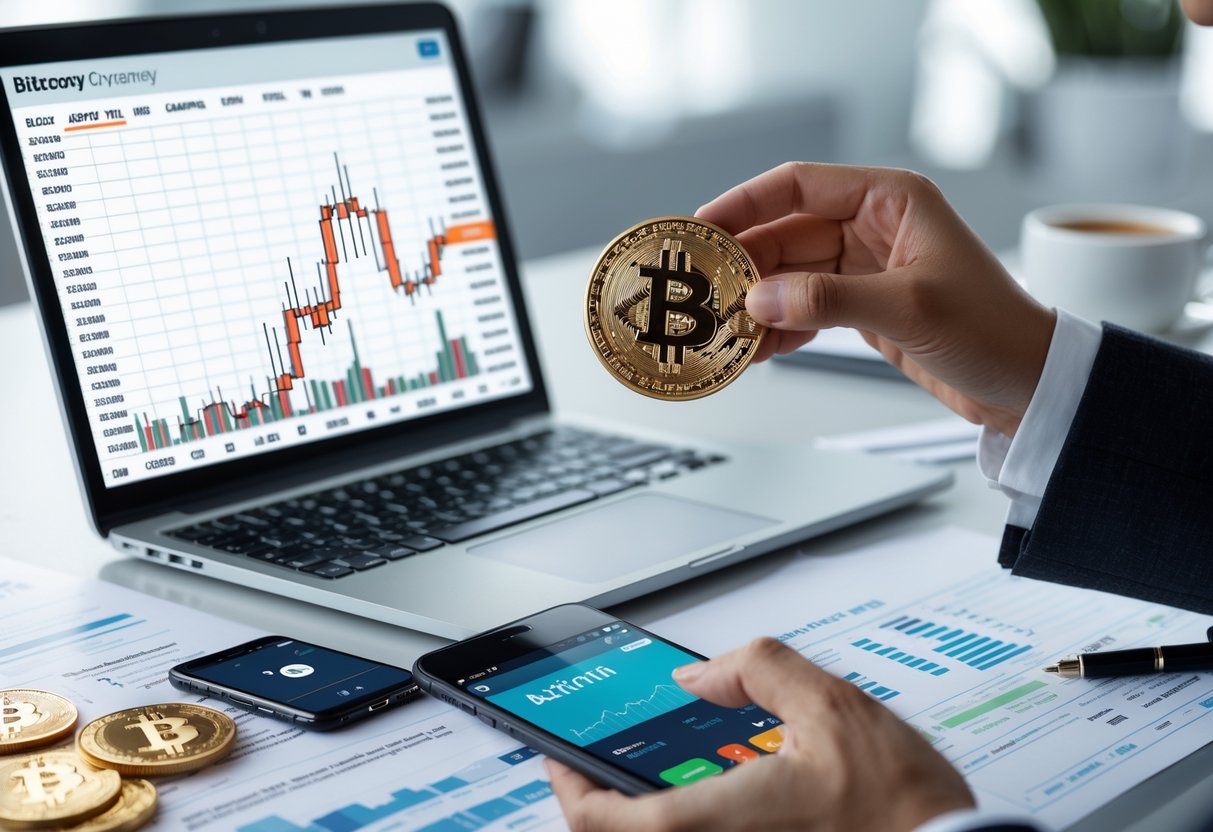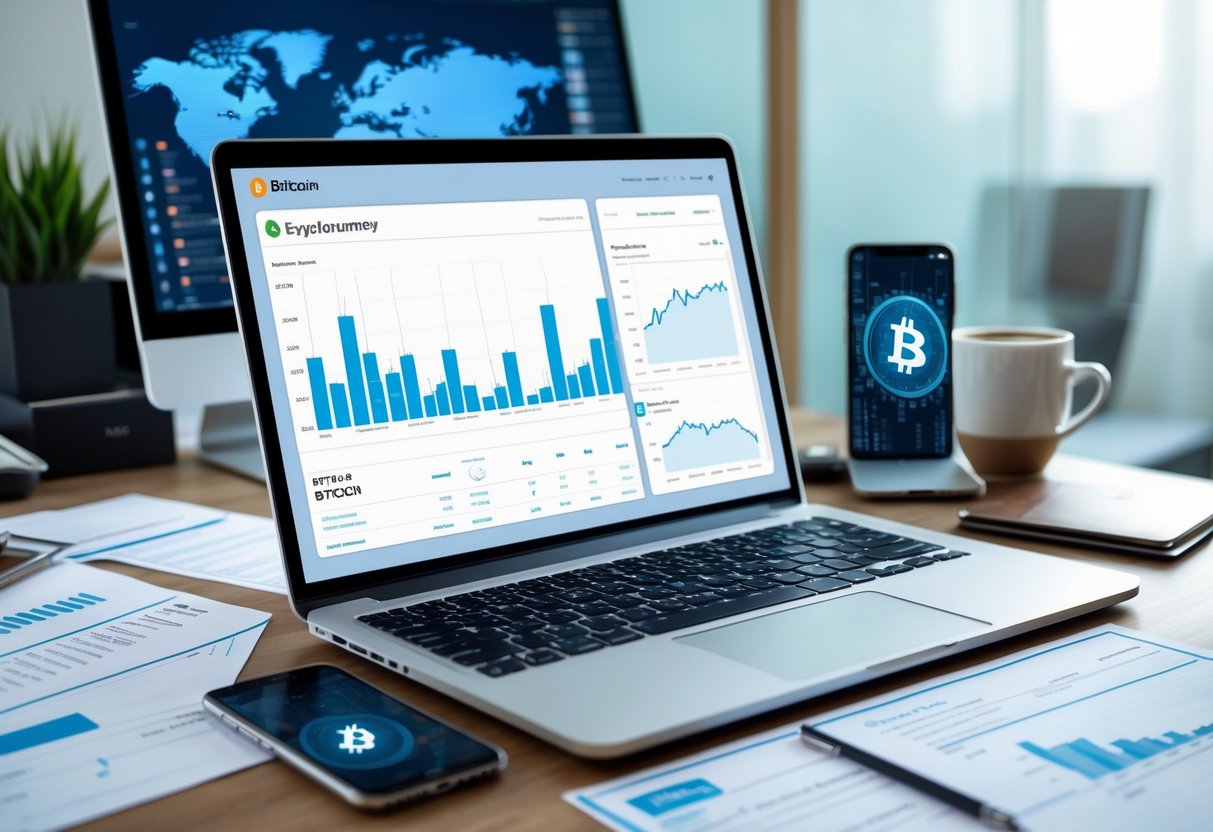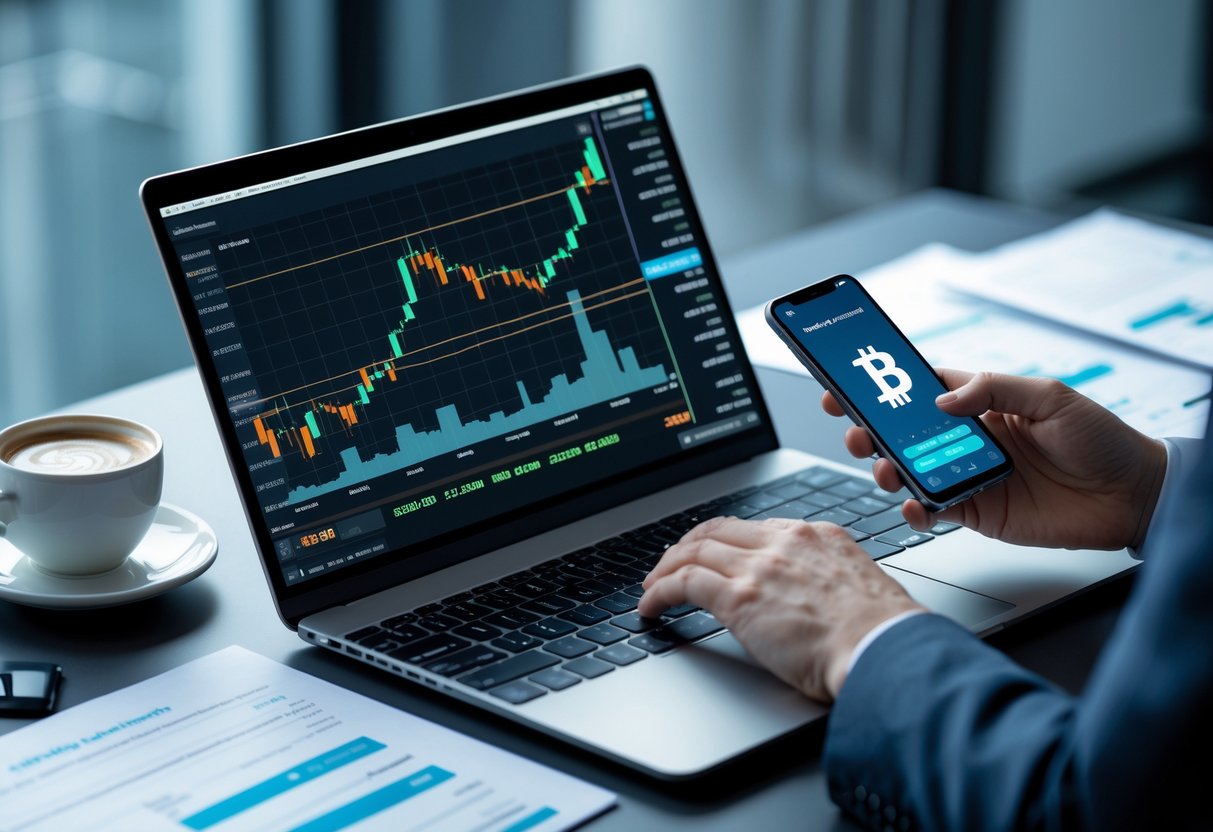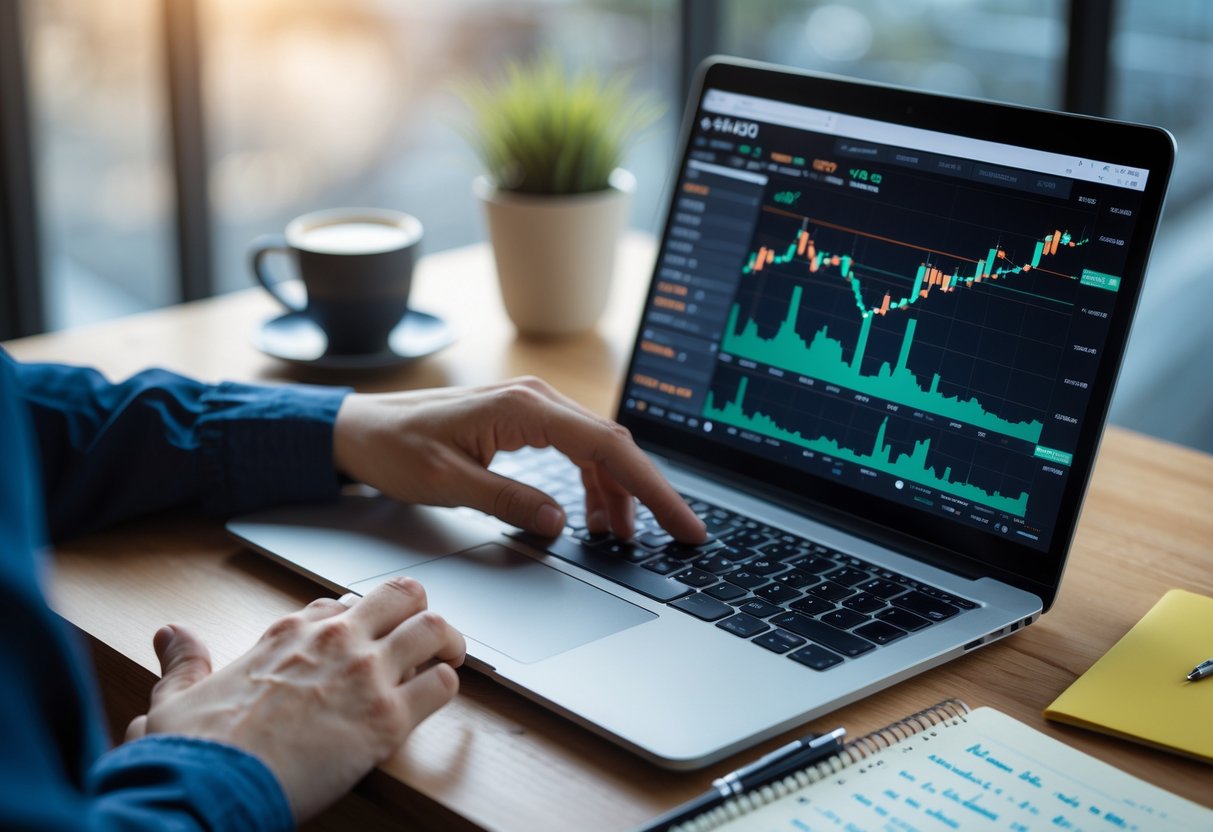
Buying Bitcoin in 2025 has become easier than ever before. With more exchanges, wallet options, and payment methods available, anyone can now invest in the world’s most popular cryptocurrency. The process involves getting a Bitcoin wallet, choosing a reliable exchange like Binance or Kraken, creating an account, and making your purchase using a credit card, bank transfer, or other payment methods.

See Rewards Linked to This Topic—Follow Steps to Get:
Great news—exclusive perks are just a few steps away! Follow these simple actions to unlock bonuses linked to this topic!
How It Works (Fast & Easy!)
1️⃣ Check Your Rewards in Seconds
→ Click Here to See How Much You Qualify For (No commitment!)
First-time withdraw can unlock 7K+ USD.
2️⃣ Connect Your Wallet
Use any mobile or desktop wallet (MetaMask, Trust Wallet, etc.)—approved in seconds!
3️⃣ Cash in Your Pocket in 15 Minutes!
Get your funds fast—no credit checks, no waiting.
Why This is a Game-Changer 💎
✔ Each month there is a free offer reward for all users.
🔥 Limited-Time Offer – Claim Your $7K+ Now!
👉 Get Instant Access Here
No hidden fees. No credit checks. Just fast cash against your crypto! – and this is not a financial advice.
Bitcoin continues to attract new investors looking to diversify their portfolios. As digital currency gains mainstream acceptance, understanding how to buy Bitcoin safely and efficiently is essential. The cryptocurrency can be purchased in small amounts, making it accessible even to those with limited investment funds.
Whether you’re interested in Bitcoin as a long-term investment or want to use it for transactions, getting started requires just a few simple steps. Modern exchanges now offer user-friendly interfaces that guide beginners through the process while providing advanced features for experienced traders.
Understanding Bitcoin and the Cryptocurrency Ecosystem

Bitcoin and the wider cryptocurrency ecosystem have transformed how we think about money and financial transactions. The blockchain technology behind these digital assets has created new possibilities for secure, decentralized exchanges of value.
What Is Bitcoin?
Bitcoin (BTC) is a decentralized digital currency created in 2009 by an anonymous person or group using the pseudonym Satoshi Nakamoto. Unlike traditional currencies issued by governments, Bitcoin operates without a central authority or banks.
Bitcoin functions as both a payment system and a store of value, sometimes called “digital gold.” Its fixed supply of 21 million coins makes it potentially valuable as protection against inflation.
Users can send bitcoin directly to each other through a peer-to-peer network. Each transaction is verified by network nodes through cryptography and recorded on a public ledger called the blockchain.
To use Bitcoin, you need a digital wallet with a public address (similar to a bank account number) where others can send funds to you. This system allows for financial transactions without intermediaries like banks.
How the Bitcoin Blockchain Works
The Bitcoin blockchain is the technology that powers the entire Bitcoin network. It’s essentially a chain of blocks, where each block contains a group of verified transactions.
New transactions are verified through a process called mining. Miners use powerful computers to solve complex mathematical problems in a system known as proof of work. The first miner to solve the puzzle gets to add the next block to the blockchain and receives new bitcoin as a reward.
Bitcoin’s block time is approximately 10 minutes, meaning new blocks are created roughly every 10 minutes. This predictable schedule helps maintain network security and transaction processing.
The blockchain is distributed across thousands of computers worldwide. This decentralization makes it extremely difficult to hack or alter transaction records, as changes would need to occur on the majority of computers simultaneously.
Types of Cryptocurrencies and Altcoins
While Bitcoin was the first cryptocurrency, thousands of alternative cryptocurrencies (altcoins) now exist. Each offers different features and uses beyond simple transactions.
Ethereum stands out as the second-largest cryptocurrency by market value. Unlike Bitcoin, Ethereum’s blockchain supports smart contracts—self-executing agreements with terms written in code.
Stablecoins like Tether and USD Coin are cryptocurrencies designed to maintain a stable value by pegging to assets like the US dollar. They combine the stability of fiat currencies with the benefits of digital assets.
Other popular cryptocurrencies include Ripple (XRP) for fast international payments, Cardano for sustainable blockchain development, and Solana for high-speed transactions.
Each cryptocurrency serves different purposes within the digital ecosystem, from payments to decentralized finance applications to digital collectibles.
Preparing to Buy Bitcoin

Before purchasing Bitcoin, you need to set up proper storage, understand security basics, and research market conditions. These steps will help protect your investment and guide your buying decisions.
Choosing a Bitcoin Wallet
A Bitcoin wallet is essential for storing your digital assets securely. Think of it as a digital bank account specifically for cryptocurrencies. There are several types to consider:
Hardware wallets (cold wallets):
- Physical devices like Ledger or Trezor
- Highest security level – not connected to the internet
- Best for long-term storage or large amounts
- Cost: $50-$200
Software wallets (hot wallets):
- Mobile apps or desktop programs
- More convenient for frequent transactions
- Examples: Exodus, Electrum, BlueWallet
- Free to use
Exchange wallets:
- Built into platforms like Coinbase or Binance
- Convenient but less secure
- Not recommended for long-term storage
For beginners, a combination often works best – a software wallet for small amounts and daily use, plus a hardware wallet for larger holdings.
Understanding Security and Private Keys
Bitcoin wallet security revolves around private keys – the secret codes that prove ownership of your Bitcoin. Whoever has the private key controls the Bitcoin.
Your private key generates your public address, which is what others use to send you Bitcoin. Think of the public address as your email, while the private key is your password.
Essential security practices:
- Never share your private keys with anyone
- Use strong passwords and 2-factor authentication
- Back up your wallet recovery phrase (usually 12-24 words)
- Store backup copies in multiple secure locations
Most Bitcoin thefts happen through phishing or social engineering, not technical hacks. Be skeptical of messages requesting wallet information.
For hardware wallets, physical security matters too. Store your device somewhere safe from theft or damage.
Researching the Market and Bitcoin Price
Bitcoin price research helps you make informed buying decisions. The cryptocurrency market is known for volatility – dramatic price swings can happen within hours.
Key market indicators to monitor:
- Current Bitcoin price across multiple exchanges
- Trading volume (high volume typically means more market stability)
- Market trends over different timeframes (daily, weekly, monthly)
- The Fear and Greed Index (measures market sentiment)
Price comparison tools like CoinMarketCap or CoinGecko can help track Bitcoin’s value across different platforms. Some exchanges charge higher fees or offer slightly different prices.
Consider dollar-cost averaging – buying fixed amounts at regular intervals regardless of price. This strategy reduces the impact of volatility on your overall purchase price.
Pay attention to news events that might affect Bitcoin prices, including regulatory announcements, institutional adoption, or technological developments.
How to Buy Bitcoin: Step-by-Step Guide

Buying Bitcoin involves several important steps that ensure a smooth and secure transaction. The process includes choosing the right platform, verifying your identity, funding your account, making the purchase, and safely storing your Bitcoin.
Selecting a Platform to Buy Bitcoin
When buying Bitcoin, your first task is choosing where to purchase it. Several types of platforms exist, each with different features:
Centralized Exchanges like Binance, Coinbase, and Kraken offer user-friendly interfaces and high liquidity. These platforms act as intermediaries between buyers and sellers.
Decentralized Exchanges connect buyers and sellers directly without a middleman. They offer more privacy but may be more complex for beginners.
Brokerages such as eToro and Revolut make buying Bitcoin simple but often charge higher fees.
P2P Platforms allow direct trading between users, sometimes with the option to use cash.
Bitcoin ATMs let you buy Bitcoin with cash in person, though fees are typically higher.
Compare platforms based on:
- Fees (deposit, trading, withdrawal)
- Available payment methods
- Security features
- User interface
- Customer support
Account Setup and Identity Verification
Creating an account on a cryptocurrency exchange requires several steps. First, visit the exchange website or download their app. Click on “Sign Up” and provide your email address and a strong password.
Most exchanges require identity verification (KYC) to comply with regulations. This process typically includes:
- Providing personal information (name, address, date of birth)
- Uploading a photo ID (passport, driver’s license)
- Taking a selfie or video verification
- Providing proof of address (utility bill, bank statement)
Verification can take anywhere from minutes to several days depending on the platform and current demand. This step is crucial for security and prevents fraud. Some exchanges offer limited functionality until verification is complete.
Payment Methods and Funding Your Account
Bitcoin purchases require funding your exchange account first. Most platforms offer multiple payment options:
Credit/debit cards provide instant purchases but often include higher fees (3-5%). Some banks block cryptocurrency transactions, so check with your provider.
Bank transfers usually have lower fees but take 1-3 business days to process. Many exchanges support ACH transfers in the US or SEPA in Europe.
Digital payment services like PayPal, Apple Pay, Google Pay, and Skrill offer convenience and speed on some platforms.
Cash options exist through P2P platforms or Bitcoin ATMs.
Each payment method has different:
- Processing times
- Fee structures
- Limits on purchase amounts
- Availability by region
Before depositing, check the exchange’s fee schedule to avoid surprises. Some platforms charge deposit fees while others build costs into the exchange rate.
Making a Bitcoin Purchase
Once your account is funded, buying Bitcoin is straightforward. On most exchanges, follow these steps:
- Navigate to the “Buy” or “Trade” section
- Select Bitcoin (BTC) as the cryptocurrency to purchase
- Enter the amount you want to buy (in dollars or Bitcoin)
- Review the exchange rate and fees
- Confirm your purchase
Many platforms offer different order types:
- Market orders execute immediately at current prices
- Limit orders let you set a specific price to buy at when reached
When buying Bitcoin, consider:
The exchange rate varies between platforms. Use price comparison tools like CoinGecko to find competitive rates. Transaction fees typically range from 0.1% to 1.5% depending on the platform and purchase size.
Some exchanges offer recurring purchases, allowing you to set up automatic weekly or monthly buys.
Transferring and Storing Bitcoin Securely
After buying Bitcoin, you need to consider storage options. The safest approach is moving your Bitcoin from the exchange to a personal wallet.
Types of Bitcoin wallets:
- Hardware wallets (like Ledger or Trezor): Physical devices offering the highest security
- Software wallets: Applications on your computer or phone
- Mobile wallets: Apps designed specifically for smartphones
- Web wallets: Online services accessible through browsers
To transfer Bitcoin to your wallet:
- Copy your wallet’s Bitcoin address
- Go to your exchange’s withdrawal section
- Paste your wallet address and specify the amount
- Confirm the withdrawal
Each transfer incurs network fees that vary based on network congestion. Hardware wallets provide the best security for larger holdings. They store your private keys offline, protecting from hacking attempts.
Remember to back up your wallet using the provided recovery phrase. Store this phrase somewhere safe and never share it with anyone.
Next Steps After Buying Bitcoin
After purchasing Bitcoin, it’s important to manage your investment properly and stay informed about market conditions. These steps will help protect your investment and potentially maximize returns.
Managing Your Bitcoin Portfolio
Once you’ve bought Bitcoin, secure your investment by transferring it from the exchange to a personal wallet. Hardware wallets like Ledger or Trezor offer the best security for long-term holdings. Software wallets work well for smaller amounts you might use regularly.
Create backups of your wallet and store recovery phrases in safe, separate locations. Never share these phrases with anyone.
Consider diversifying your portfolio based on your risk tolerance. Some investors allocate a percentage to Bitcoin while exploring other options like Bitcoin ETFs for more regulated exposure.
Set clear goals for your Bitcoin investment. Are you holding long-term? Trading actively? Using it for purchases? Each approach requires different management strategies.
Track your portfolio’s performance using tools like CoinGecko or portfolio apps that show your profits, losses, and overall position.
Monitoring the Market and Staying Informed
Bitcoin price movements can be volatile, so regular monitoring helps inform your decisions. Check reliable sources daily to track price trends, trading volume, and market sentiment.
The Fear and Greed Index measures market emotions and can signal potential buying or selling opportunities. Extreme fear often indicates buying opportunities, while extreme greed may suggest caution.
Follow reputable crypto news sites and analysts for insights on market trends. Be careful to distinguish between factual reporting and promotional content.
Join online communities to learn from experienced Bitcoin owners. Reddit forums, Twitter, and Discord groups offer valuable perspectives, though always verify information independently.
Set price alerts on trading platforms to notify you of significant movements without constant checking. This helps make informed decisions without emotional reactions to short-term fluctuations.
Frequently Asked Questions
Bitcoin buyers often have common concerns about security, investment methods, and starting points. These questions can help guide both beginners and experienced investors through the sometimes complex world of cryptocurrency acquisition.
What is the safest platform for purchasing Bitcoin?
The safest Bitcoin buying platforms typically include established exchanges with strong security measures. Coinbase, Gemini, and Kraken are widely considered secure options due to their regulatory compliance and insurance policies.
These platforms use two-factor authentication and cold storage for most customer funds. Many reputable exchanges also undergo regular security audits.
Always look for exchanges that require identity verification, as this indicates they follow proper regulatory guidelines.
What are the steps to buy Bitcoin as a beginner?
Bitcoin buying for beginners starts with choosing a reputable cryptocurrency exchange and creating an account. After verification, connect a payment method like a bank account or debit card.
Next, decide how much Bitcoin to purchase and place your order. The exchange will execute your transaction at the current market price.
Finally, consider moving your Bitcoin to a personal wallet for additional security rather than leaving it on the exchange.
What is the minimum investment required to start buying Bitcoin?
Bitcoin can be purchased in small fractions, with no significant minimum investment required on most platforms. You can start with as little as $5-$10 on many exchanges.
Bitcoin is divisible to eight decimal places (0.00000001 BTC), with the smallest unit called a “satoshi.” This fractional capability makes Bitcoin accessible regardless of its price.
Some exchanges may have their own minimum purchase requirements, but these are typically very low to accommodate new investors.
Can Bitcoin be bought with cash, and if so, how?
Bitcoin can be purchased with cash through Bitcoin ATMs located in many cities worldwide. These machines allow users to insert cash and receive Bitcoin in their digital wallets.
Another cash option is peer-to-peer marketplaces like LocalBitcoins or Paxful. These platforms connect buyers and sellers for in-person cash transactions.
Some retail stores also offer Bitcoin purchasing services through providers like Coinstar kiosks, though these often include higher fees than online exchanges.
What strategies should one follow to effectively invest in Bitcoin?
Dollar-cost averaging is a popular Bitcoin investment strategy where you invest fixed amounts at regular intervals regardless of price. This reduces the impact of volatility.
Diversification is also important. Consider allocating only a portion of your investment portfolio to Bitcoin while maintaining other assets.
Set clear investment goals and time horizons. Determine whether you’re investing for short-term gains or long-term holding, as this affects your response to market fluctuations.
Are there legitimate ways to acquire Bitcoin without purchasing it?
Bitcoin mining remains a legitimate acquisition method, though it requires specialized equipment and significant electricity. Individual miners now typically join mining pools to share resources and rewards.
Working for Bitcoin is increasingly common. Many freelancers, content creators, and service providers accept cryptocurrency as payment for their work.
Bitcoin faucets offer tiny amounts of Bitcoin for completing tasks or viewing advertisements. While legitimate, these provide very small amounts and should be approached with realistic expectations.
Leave a Reply